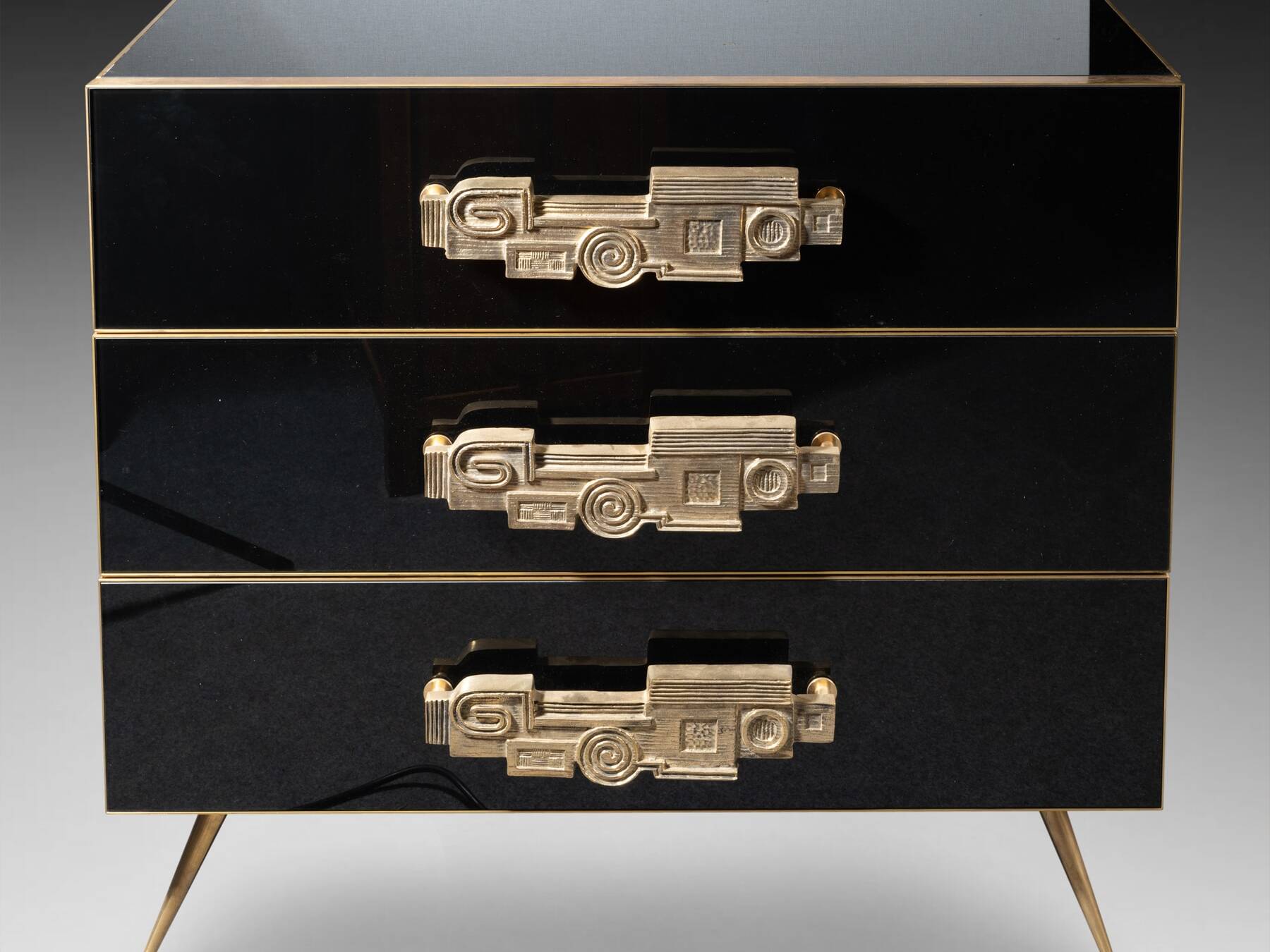In the 17th century, the Portugal’s argumentativeness was not so much a flaw as an artistic stance. Faced with the tumultuous Spanish neighbour, the affirmation of the Portuguese style is also reflected in the furniture, where the wood species are chosen from those not used by the Hispanics. Rosewood and Brazilian mahogany make the most beautiful creations, affirming a Portugal whose cultural presence extends far beyond the seas. Competitive spirit? Rather Portugal demanding revenge.
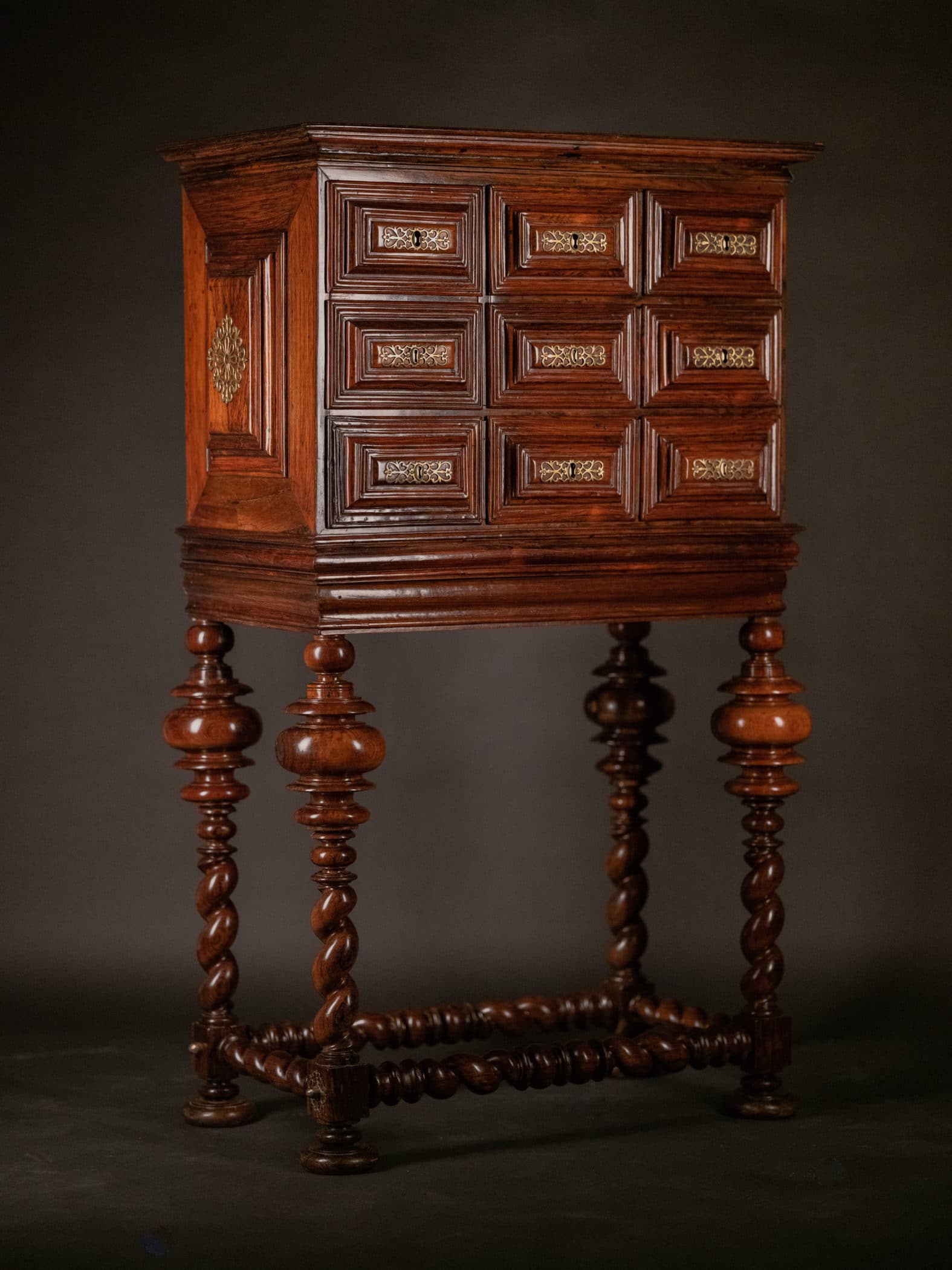
Genesis and appropriation of a Hispanic piece of furniture
Let’s give credit to Moorish Spain for this cabinet that is recognizable among all. It was in Bargas, near Toledo, that the bargueño was born. It is always in this region of Spain that it develops. Marquetry is used on many pieces, testifying to the vitality of central Spain in this artistic field.
Up until the 17th century, ever more luxurious cabinets aroused the envy of the privileged. Furniture opens on a flap or doors revealing drawers. There are two types of lower part: the first is in the form of a chest raised by columns or “bridge stack” or in the form of a credenza with four drawers known as “conventual”. Generally, they are made of solid oak, chestnut or walnut.
As this type of cabinet is designed to be moved, it is usually placed on a wooden or wrought iron base called pie de puente . It is appreciated in symbiosis with the cabinet, and this base often merges with it in elegant flights of sculpture and inlays.

But the coveted or stunned base usually disappears over time, either deliberately removed or lost. Let’s enjoy these bargueños still perched on their original feet!
Superb and often ostentatious, the Spanish bargueño is nevertheless gradually losing its influence to cabinets where German or Italian lines reign. Soon, he was summoned by 18th century Spain to bow to the craze for Italian and Anglo-Dutch influencedarquimesa. Is Portugal following suit? Certainly not.
In fact, it is quite different. Following a traumatic Spanish domination stretching from the late 16th century to the middle of the 17th century, Portugal – which only became truly independent in 1662 – developed a real aversion to Hispanic culture, with which the country intended to sever all ties. Not an easy task !
Determined to assert its cultural distinctiveness, Portugal drew on English, French and Italian influences as well as Japanese, Indonesian and Brazilian thanks to the vast colonial network it had patiently woven.
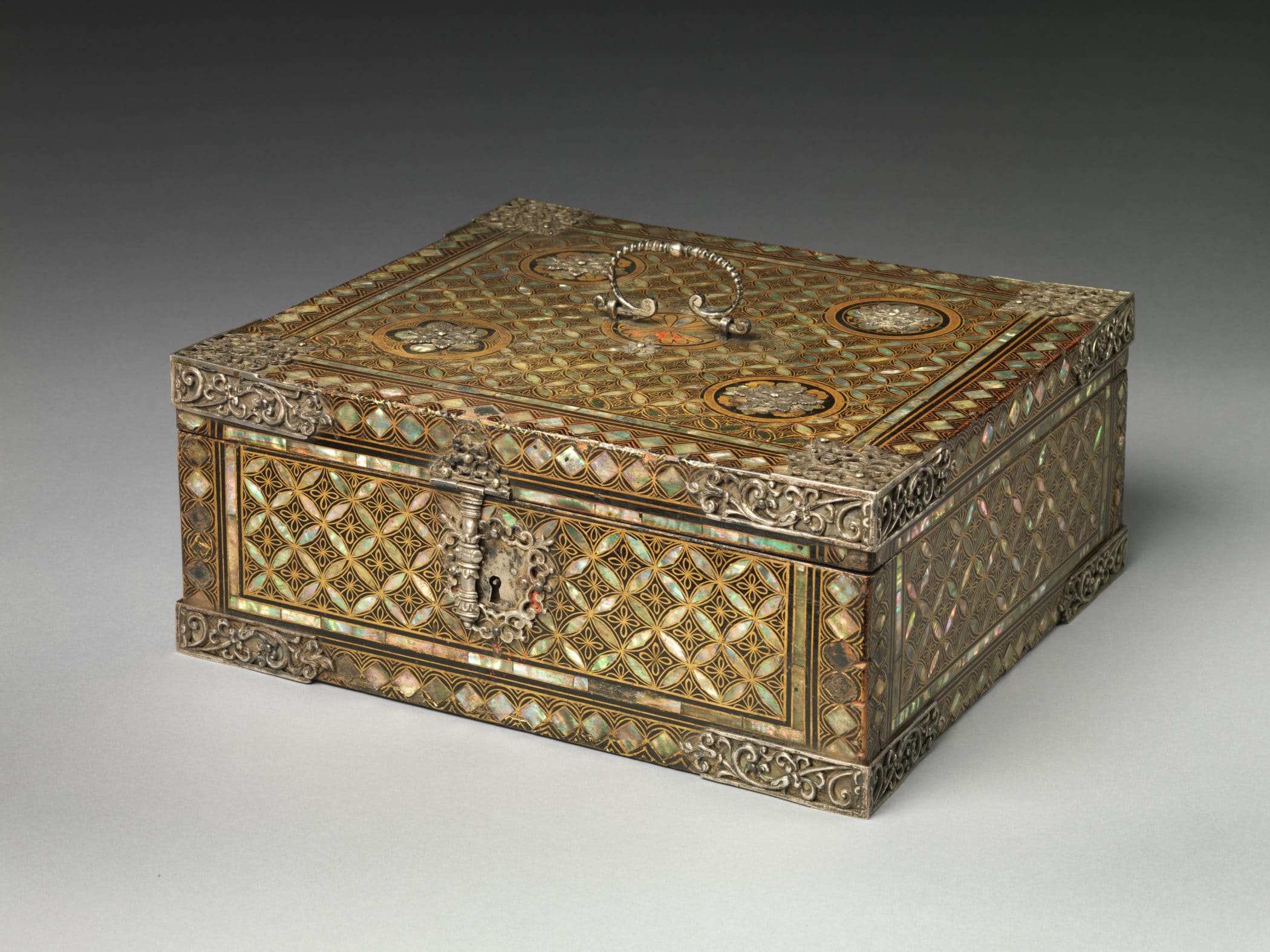
Golden age and virtuosity of the Portuguese bargueño
Using materials and motifs with mastery, Portuguese syncretism develops its own recognizable and unique look.
Above all, the generous forms of the Portuguese cabinets are enlivened by the warm reflections of exotic woods worked with great finesse and enriched with delicate golden bronzes. The patterns are chiseled, the influences exotic, the result is unique.
Long before the 18th century baroque, turned wood dynamically elevates the elegant – though still timid – Portuguese flights of fancy.
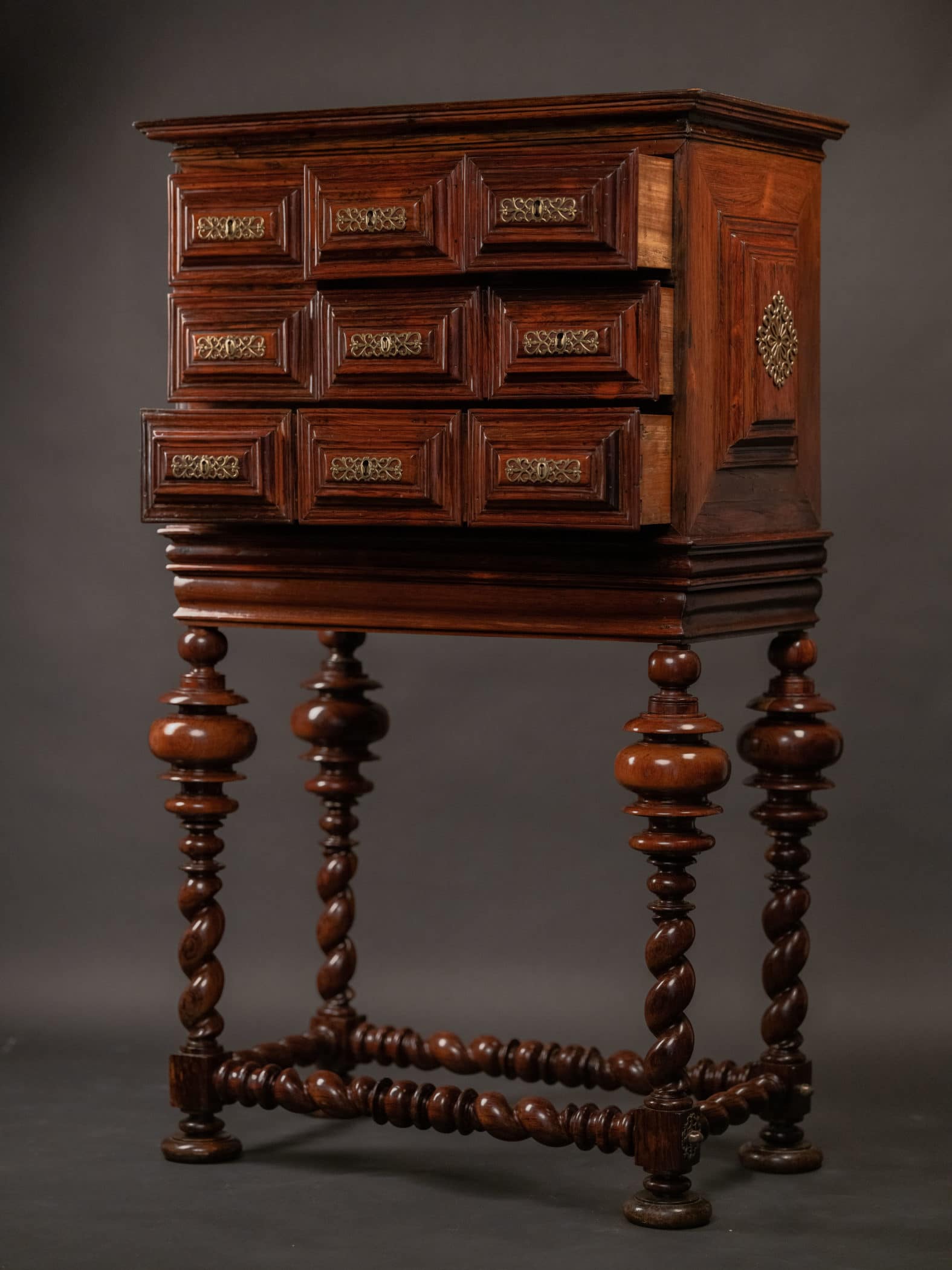
This Portuguese character, born in the 17th century, was fully affirmed at the beginning of the 18th century when the minister Sebastião José de Carvalho e Melo, Count of Oeiras and Marquis of Pombal (1699 – 1782), under the reign of Joseph I (1750 – 1777), undertook a series of reforms in the spirit of an “enlightened despotism”.
This determined man revived trade by creating chartered companies, created new industries (notably silk and cutlery), and reorganized the University of Coimbra.
These energetic undertakings, which began in the last quarter of the 17th century, also had a more delicate and political than economic and cultural purpose: it was necessary to alleviate the resentment of a part of the population that saw the innumerable richnesses coming from the colonies without ever feeling the benefits. Bad reallocation is rampant when, at the same time, ostentatious abundance is beginning to make people uncomfortable.
A royal decree soon limited the silver and gilding of furniture, while the baroque flights suddenly became more discreet.
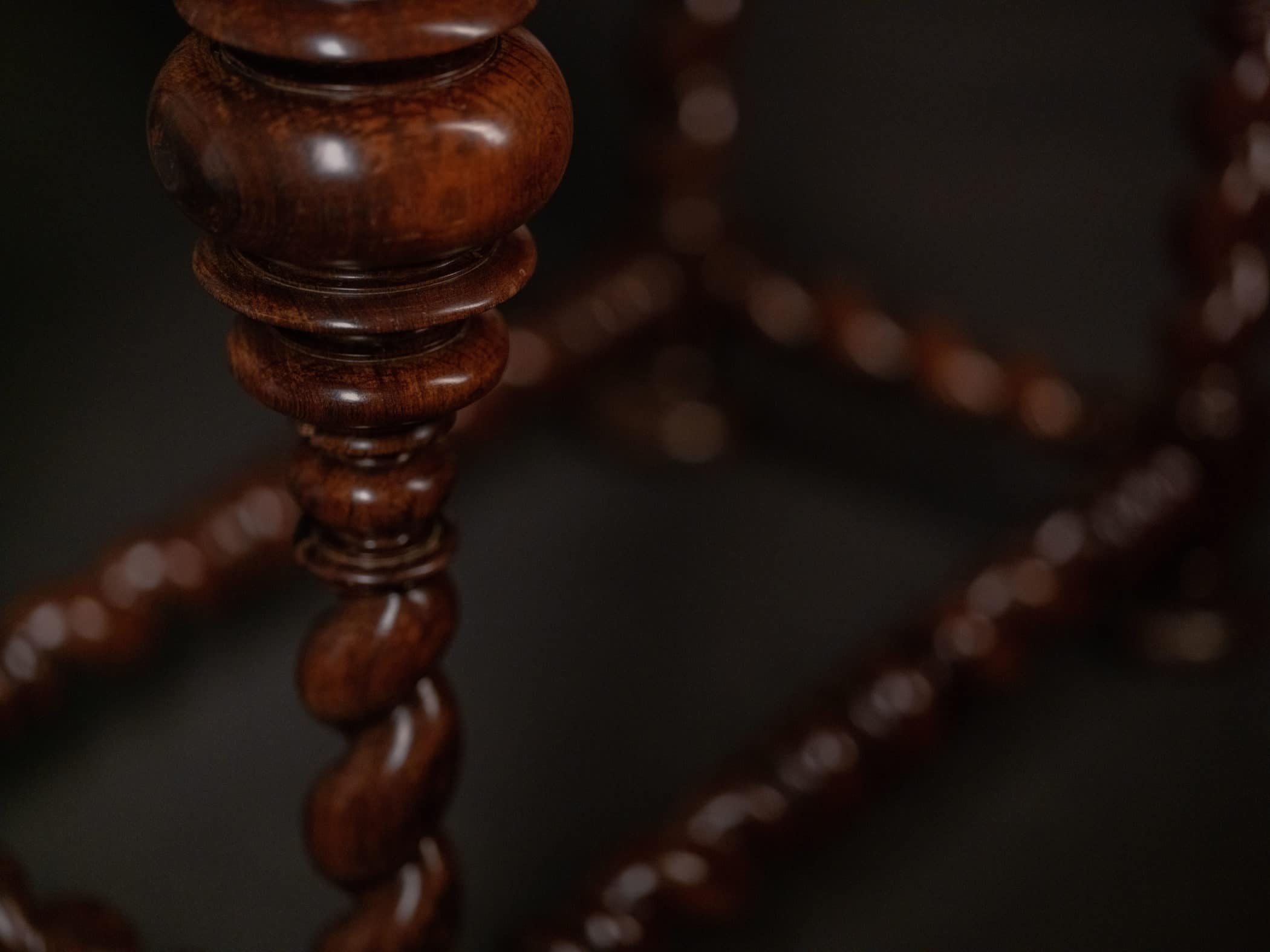
The Portuguese furniture of the 17th century, such as this cabinet that we presentThe Portuguese furniture of the XVIIth century, then that of the XVIIIth century, responds to a fierce will to exist in the face of an invading and dominating Spain. In the second half of the 18th century, the imperative economic revival of the country naturally required a vitality of Portuguese creation, fanned by the baroque influences fashionable in Europe and enriched by the numerous colonial richnesses.
What do we see on our cabinet? Spiral movement of the turned wood and gilded bronzes evoking the delicate and interwoven patterns of the distant Indies. An exemplary illustration of a Portuguese creation from the early 17th century.

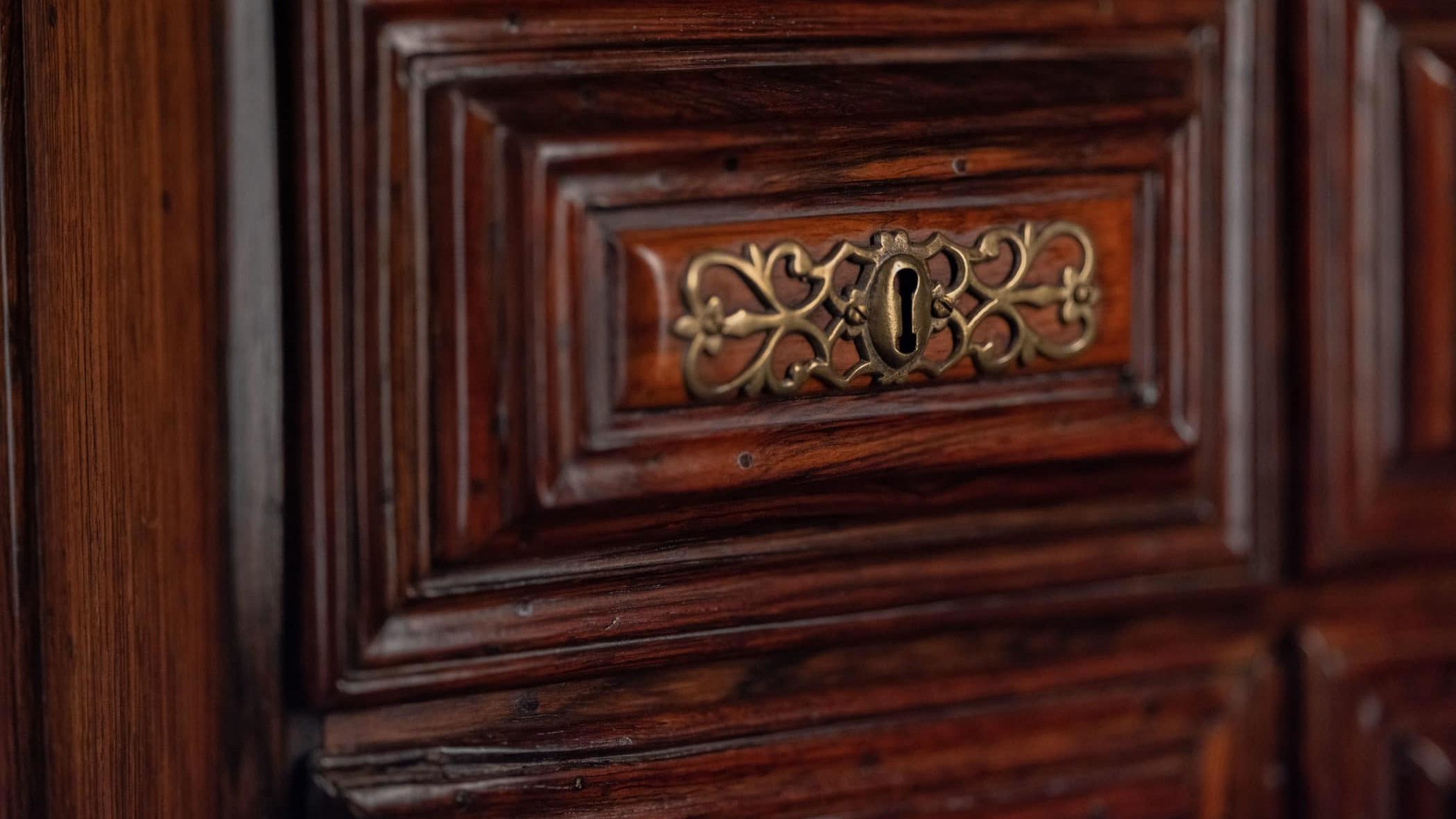
Without a doubt, the bargueño is reserved for the wealthier classes of Portuguese society. This type of furniture is admirably presented in many museums in the country, while cabinets very similar to ours are exhibited in the Palace of the Dukes of Bragança and in the Cadaval Palace.
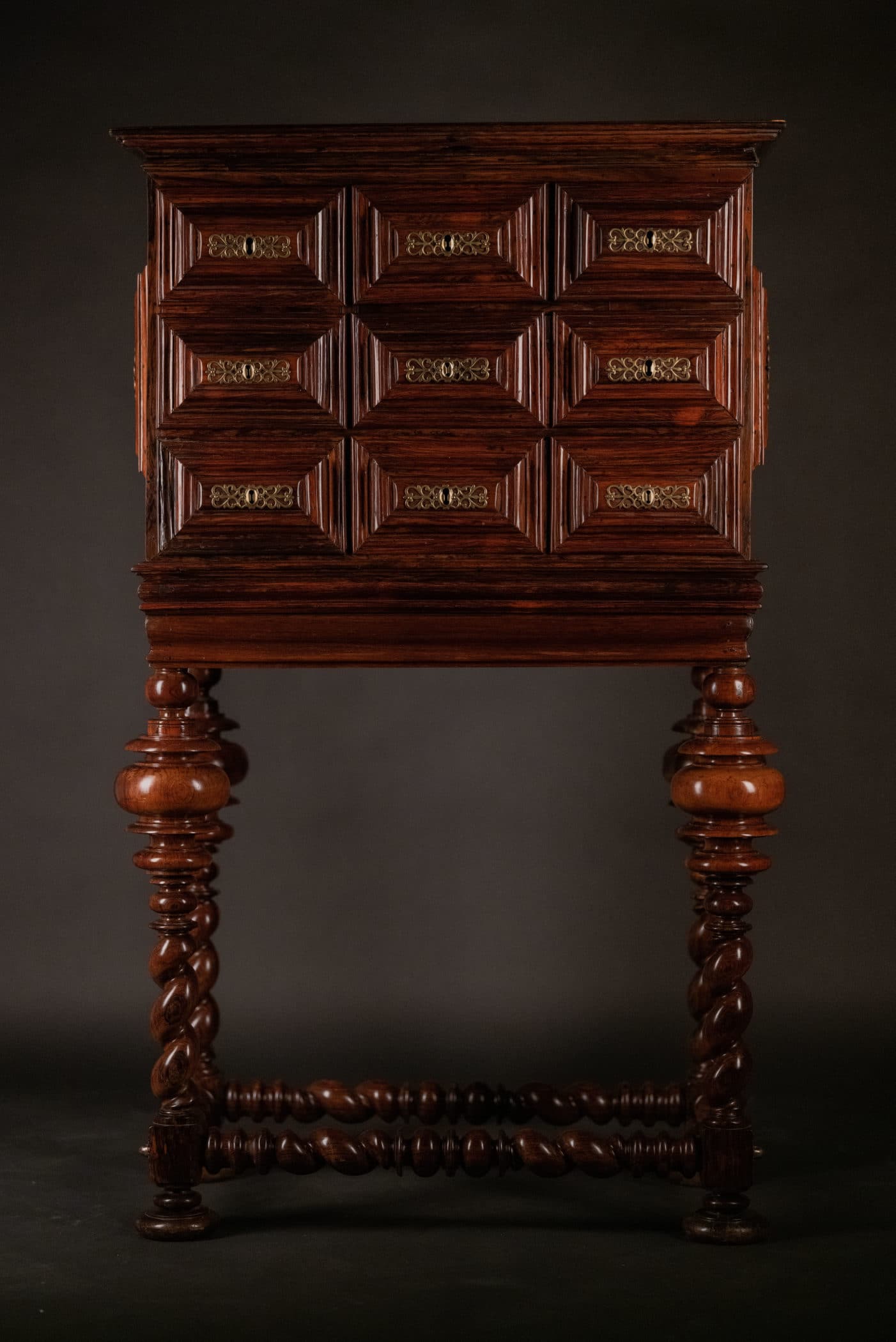
Marielle Brie
Art Historian for Art Market and Cultural Media
Author of the blog Objets d’Art et d’Histoire
Autres ressources et documentations
28 June 2025
Plaster Sculptures, Plaster Casts
For a long time, plaster casts suffered from a poor reputation. Often regarded as crude replicas, and sometimes even dismissed as inexpensive imitations, they nonetheless had…
17 April 2025
The Middle-Ages Furniture
Rare and highly sought-after, Middle-Ages furniture is making a strong comeback. An overview of this market, where enlisting the guidance of a professional is strongly advisable.
18 March 2025
Murano Glass Furniture
Since the beginning of the 20th century, Murano glassmakers have been exploring new horizons. After classic lighting and decorative art, Murano glass is now used to adorn…
16 December 2024
A bronze triton after the sculptures of François Girardon (1628 – 1715) in Versailles
This fountain element is all the more admirable as it is sculpted after the masterpieces of the Pyramid Basin, on the parterre of the North Wing of the Versailles gardens.
18 November 2024
Tyco Bookcase, by Manfredo Massironi, for Nikol International
A pure creation of optical art research in the 1960s, the Tyco library shelf designed by Manfredo Massironi invites the viewer to bring the work of art to life on a daily basis.
3 August 2024
The Ocean Liner Style
In the 20th century, the immense ocean liners connecting the Old Continent and the New World were ambassadors of tastes and innovations on both sides of the Atlantic.



